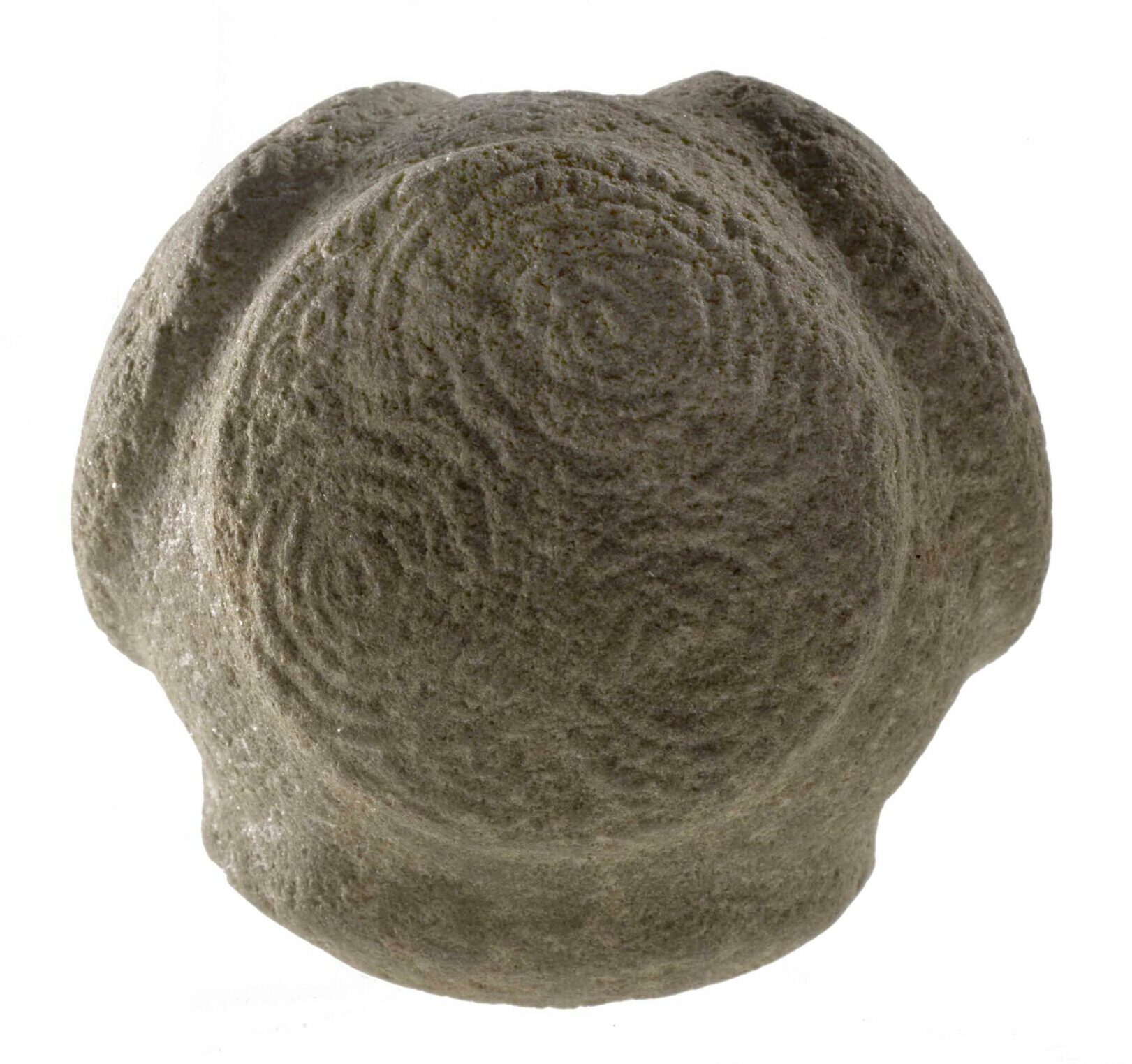There was a proposal above that used the shape very neatly for ciphering the local languages, and not for languages in other parts of the empire.
In the link, here:
Slight tangent to the thread but I just recently learned about the The Folkton Drums - which are archaeological mysteries too - they are decorated cylinders of soft chalk rock; several examples have been found in the UK, associated with neolithic burials; possibly specifically related to child burials; found in sets of three.
Because these are grave goods, it’s a little easier to argue that these were just some ritual object; it has been theorised that they are some sort of measuring device (or a ritual representation of what might have been a real-world measuring device made from wood), but the explanations ring hollow just like they do for the dodecahedra.
I mean, very vaguely anthropomorphic I-did-the-bare-minimum stone sculptures are not an uncommon artefact type for that time period. From kurgan stele to statue menhirs, you can find fairly abstracted sculptures alongside more realised works. They’re just a particular regional format of a wider phenomenon, I think.
I think all the maths and stuff is reading too much into them - yes, they were close to some multiple of their standard measurement. That doesn’t mean they were themselves standards or measurement tools.
Yeah. I think it’s questionable whether the features on the cylinders are even representative of faces, but if we assume they are, a likely explanation is that they’re either some representation of the parents of the child being buried, or are some sort of guardian figure.
Some of the designs on the Folkton Drums are very similar to the designs on the Scottish Petrospheres. The triple whorl design on top of this drum is much like the triple whorl design on the side of the sphere. This is maybe not too surprising, since the artifacts were created about 100 miles and 500 years apart.
I don’t want to hijack this thread any further - I suppose if there’s enough interest in the chalk cylinders, we could start a different thread, but mainly I just wanted to mention them here because they are sort of intriguing in a generally similar way as the Roman dodecahedra.
We could discuss the drums in the more generic “Mysterious Objects” thread.
https://boards.straightdope.com/t/what-else-dont-we-know-mysterious-objects/
Joe Scott’s view on the matter.
Who is Joe Scott and why should we care?
And is it possible to get a summary of their views before watching a half-hour of video that looks on preview to mostly be a talking head?
Joe Scott is a youtuber producing educational/edutainment videos on science/tech, philosophy and culture topics. His videos are typically quite well-researched and presented and I think are primarily designed to acquaint people with knowledge they may not have previously encountered. I haven’t watched the above-linked video yet, but it’s likely most of it will be a presentation of the popular existing hypotheses, together with explanations of the shortcomings of those hypotheses.
So … not an archaeologist or an expert on Roman-era technology?
I’ve just watched a bit, and he seems to think the jewelry chain-making proposal could have been used by legionaries to knit chainmail. Which indicates a complete ignorance of what Roman-era chainmail was like and how it was made. This doesn’t actually speak very highly of the level of his research.
Also, he keeps going on about how they’re found in the graves of wealthy women (plural), but as far as i know, only one (Guggenberger No.11) is unequivocally from such a grave.
I’m not remotely interested in trying to persuade you to watch his videos, but the description I gave is based on watching more than a very small sample.
Maybe most of his videos are well-researched, but that has no bearing on this particular one. His hypothesis should stand or fall on its own merits.
And “knitting chainmail”? What even would that mean?
You’d need strong hands and even stronger knitting needles.
If you know who he is already, you’d be like “Yeah!”
If you don’t know who he is already, you wouldn’t care.
Dodecahedrons were probably used for women weaving cloth and soldiers weaving chain mail.
That is actually what most people who make it nowadays call the process, but it’s nothing like the winding-wire-around-knobs kind of knitting that’s demoed in that video. It involves pre-made rings and pliers and, if you’re doing it authentically, tiny rivets and hammers..
If he’s serious about the latter, then his opinion (on this) is laughable and safely discounted. The former bit is a common theory (well, not weaving cloth, which is something else entirely, but I saw what they meant) - not one I buy into, but not as utterly risible as the latter. Lorica hamata didn’t work that way.
Well, if we’re descending to Futurama memes, this would be my opinion of the “soldiers knitting mail” theory:

Descending?
